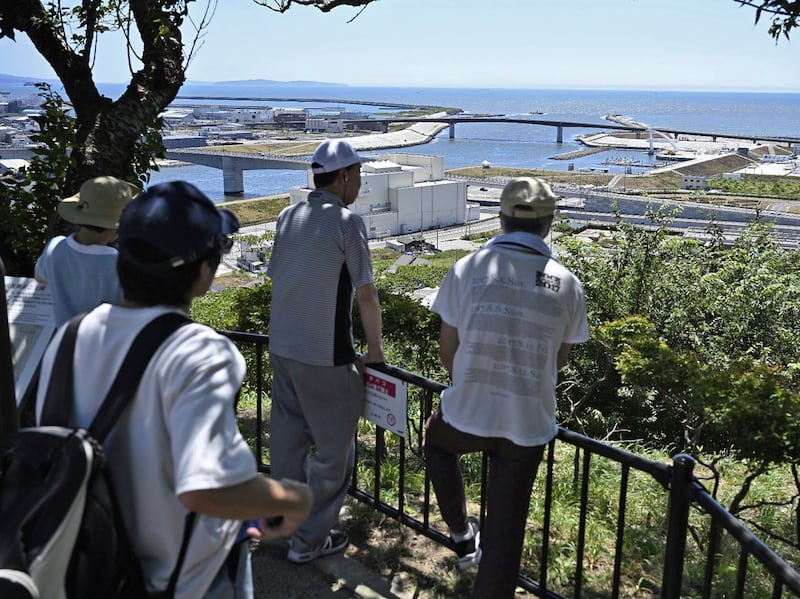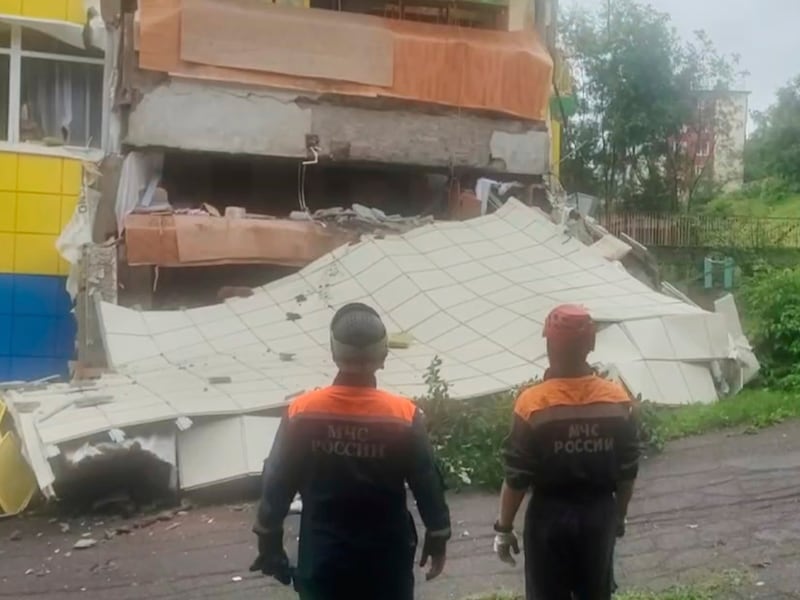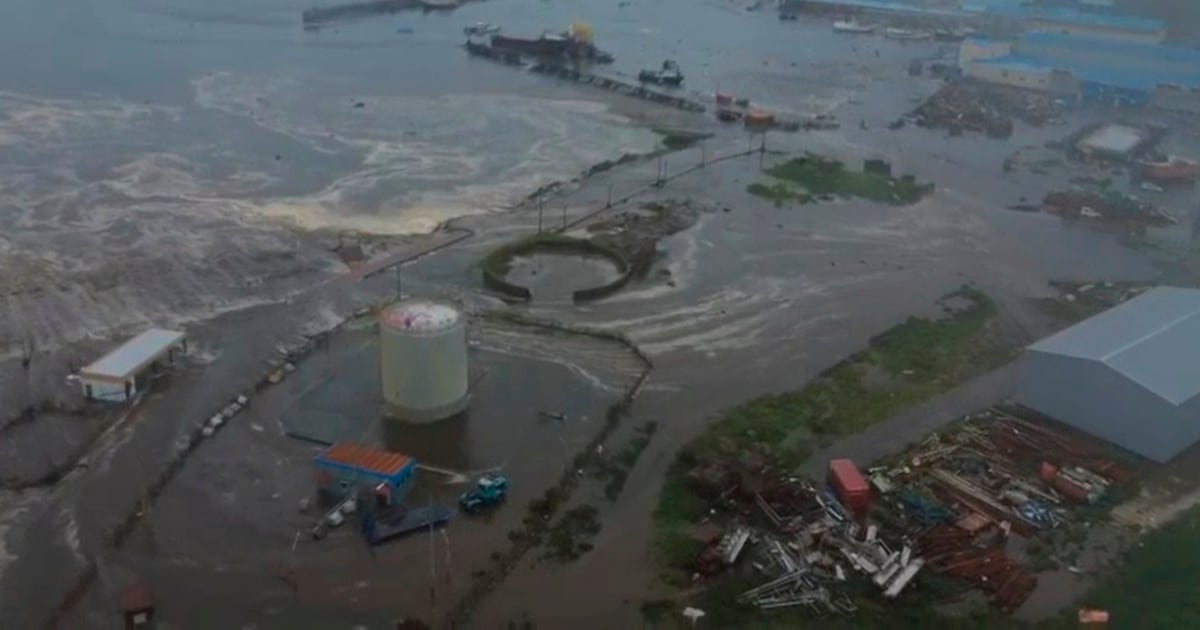One of the world’s strongest earthquakes struck Russia’s Far East on Wednesday as an 8.8-magnitude tremor set off a tsunami in the northern Pacific, with waves hitting Russia, Japan and Hawaii.
The quake had prompted tsunami warnings for Japan, Alaska, Hawaii and south toward New Zealand.
The tsunami hit coastal areas of Russia’s Kuril Islands and Japan’s large northern island of Hokkaido.
Tsunami waves later hit Hawaii. Hawaii governor Josh Green said data from Midway Atoll, which is part of the way between Japan and Hawaii, measured tsunami waves from peak to trough of 6ft (1.8m).
Tsunami warning sirens had earlier sounded in Honolulu, Hawaii, where people were told to move to higher ground.
Tsunami waves near the Russian Pacific town of Severo-Kurilsk exceeded 3m (9.84ft) in height. The most powerful wave reached up to 5m, Reuters reported.
The mayor of the Kuril Islands district said “everyone” there had evacuated to safety following the tsunami that caused flooding and swept away buildings.
“Everyone was evacuated. There was enough time, a whole hour. So everyone was evacuated, all the people are in the tsunami safety zone,” mayor Alexander Ovsyannikov said.
The Japan Meteorological Agency said a first tsunami wave of about 30cm (11in) reached Nemuro on the eastern coast of Hokkaido with 50cm detected at Ishinomaki.
Japan’s Fire and Disaster Management Agency said no injuries or damage have been reported and issued an evacuation advisory to more than 900,000 people along the Pacific coast from Hokkaido to Okinawa.
The first tsunami wave hit the coastal area of Severo-Kurilsk, the main settlement on Russia’s Kuril Islands in the Pacific, according to the local governor Valery Limarenko. He said residents were safe and staying on high ground.
Damage and evacuations were reported in the Russian regions nearest the quake’s epicentre on the Kamchatka Peninsula.
China’s Ministry of Natural Resources’ Tsunami Warning Centre issued an alert for parts of the country’s east coast along Shanghai and Zhejiang provinces, which are already under alert with Typhoon CoMay expected to land in the Zhejiang province Wednesday.
The quake at 8.25am Japan time had a preliminary magnitude of 8.0, Japan and US seismologists said. Japan and the US Geological Survey (USGS) later updated their measurements to 8.7 magnitude and the USGS said the quake occurred at a depth of 12 miles (19km).
 People who evacuated to Hiyoriyama mountain watch toward the sea in Ishinomaki, Miyagi prefecture, northern Japan. Photograph: Muneyoshi Someya/Kyodo News/AP
People who evacuated to Hiyoriyama mountain watch toward the sea in Ishinomaki, Miyagi prefecture, northern Japan. Photograph: Muneyoshi Someya/Kyodo News/AP
The quake was about 160 miles away from Hokkaido, the northernmost of Japan’s four big islands, and was felt only slightly, according to Japan’s NHK television.
Russia’s Tass news agency reported from the biggest city near the epicentre, Petropavlovsk-Kamchatsky, that many people ran out into the street without shoes or outerwear. Cabinets toppled inside homes, mirrors were broken, cars swayed in the street and balconies on buildings shook noticeably.
Tass also reported power outages and mobile phone service failures in the capital of the Kamchatka region, quoting a local Russian official as saying residents on Sakhalin Island were being evacuated and emergency services were working at full capacity.
Russian news agencies quoted the regional health ministry saying several people sought medical help in Kamchatka after the earthquake, but no serious injuries were reported.
The National Tsunami Warning Centre, based in Alaska, issued a tsunami warning for parts of the Alaska Aleutian Islands and a watch for portions of the west coast, including California, Oregon and Washington, as well as Hawaii.
The advisory also includes a vast swath of Alaska’s coastline.
The earthquake appeared to be the strongest anywhere in the world since the March 2011 earthquake off northeast Japan that measured 9.0 magnitude and caused a massive tsunami that set off meltdowns at a Fukushima nuclear power plant. Only a few stronger earthquakes have been measured around the world.
Japanese nuclear power plants along the Pacific coast have reported no abnormalities after Wednesday’s earthquake.
 Rescuers inspect a kindergarten damaged by an earthquake in Petropavlovsk-Kamchatsky, Russia. Videograb: Russian Emergency Ministry Press Service/AP
Rescuers inspect a kindergarten damaged by an earthquake in Petropavlovsk-Kamchatsky, Russia. Videograb: Russian Emergency Ministry Press Service/AP
Tokyo Electric Power Company Holdings, which operates the tsunami-hit Fukushima Daiichi nuclear power plant, said about 4,000 workers are taking shelter on higher ground at the plant complex while monitoring remotely to ensure plant safety.
Philippine authorities warned provinces and towns along the archipelago’s eastern coast facing the Pacific of possible tsunami waves of less than one metre and advised people to stay away from the beach and coastal areas.
New Zealand authorities issued warnings of “strong and unusual currents and unpredictable surges” along coastlines throughout the country.
The alert by the government emergency management agency said people should move out of the water, off beaches and shore areas, and away from harbours, marinas, rivers and estuaries.
New Zealand is about 6,000 miles from the epicentre. – AP

